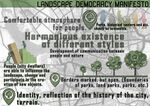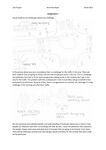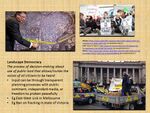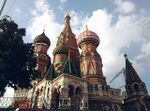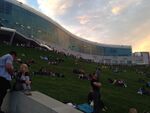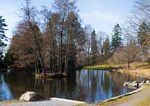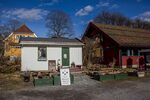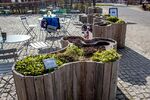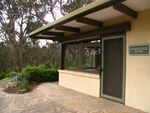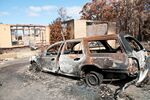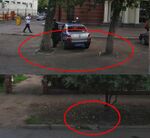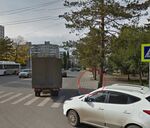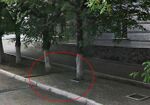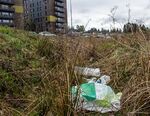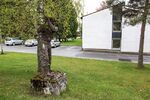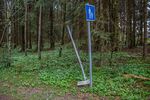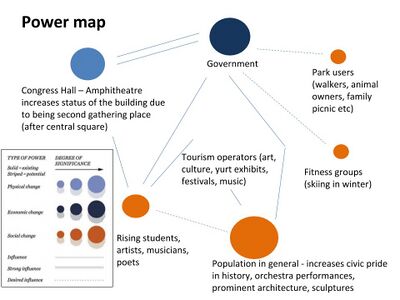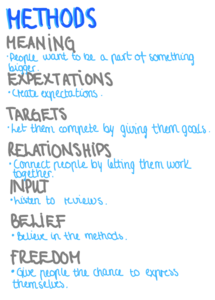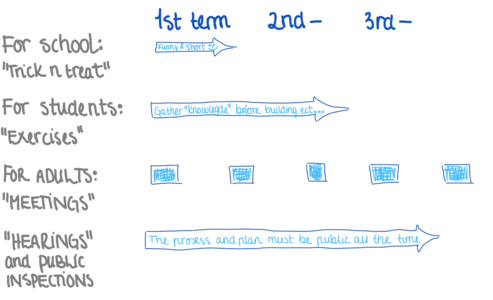LED Online Seminar 2017 - Working Group 4
--> Back to working group overview
Dear working group members. This is your group page and you will be completing the template gradually as we move through the seminar. Good luck and enjoy your collaboration!
Assignment 1 - Reading and Synthesizing Core Terminology
- You can read more details about this assignment here
- Readings are accessible via the resources page
Step 1: Your Landscape Democracy Manifestoes
Step 2: Define your readings
- Please add your readings selection for the terminology exercise before April 12:
A: Landscape and Democracy - Mapping the Terrain
- The European Landscape Convention
Landscape Concepts:
- Olwig, Kenneth R. (1996): "Recovering the Substantive Nature of Landscape" In: Annals of the Association of American Geographers, 86 (4), pp. 630-653. Cambridge/Oxford: Blackwell Publishers.
- Burckhardt, Lucius (1979): Why is landscape beautiful? in: Fezer/Schmitz (Eds.) Rethinking Man-made Environments (2012)
- Lynch, Kevin. (1960): The Image of the City, Cambridge, Mass.: MIT Press
B: Concepts of Participation
- Gaventa, John: The Powerful, the Powerless, and the Experts
C: Community and Identity
- Francis, Mark: A Case Study Method for Landscape Architecture
D: Designing
- Hester, Randolph: Life, Liberty and the Pursuit of Sustainable Happiness
E: Communicating a Vision
- Online decision making with loomio
Steps 3 and 4: Concepts Selection and definition
- Each group member selects three relevant concepts derived from his/her readings and synthesize them/publish them on the wiki by April 30, 2017
- Group members reflect within their groups and define their chosen concepts into a shared definition to be posted on the wiki by May 10, 2017.
- Other group members will be able to comment on the definitions until May 20, 2017
Concepts and definitions
Author 1 - Stephen Flack:
- Concept 1
The original Germanic word 'landschaft' incorporated both the meaning of a discrete unit of territory as well as the sense of landscape being a construct of perception through the eyes of humans. Over time it also came to mean the human laws, customs and traditions associated with an area that helped form a specific identity for the people living there. Northern European landscape art represents 'landschaft' as it was intended to emphasise the link between land and the customs and culture of the people depicted. This is opposed to Italianate landscape art, which emphasised timeless universal laws of landscape tracing back to Roman ideals (Olwig 1996).
- Concept 2
A substantive understanding of landscape requires an understanding of the historical and contemporary uses of land and how human development and identity has been shaped by interaction with it (Olwig 1996). This is more 'substantive' than attributing merely 'scenic' value to landscape.
- Concept 3
Case studies in landscape architecture projects allow for approaches to real landscapes in the past to be documented, analysed, critiqued and learnt from. A case study is a comprehensive method of summarising key aspects of a project such as core goals, site analysis, budget, maintenance issues, timeline, decision-making processes and other aspects can be documented (Francis).
References
Francis, Mark: A Case Study Method for Landscape Architecture
Olwig, Kenneth R. (1996): "Recovering the Substantive Nature of Landscape" In: Annals of the Association of American Geographers, 86 (4), pp. 630-653. Cambridge/Oxford: Blackwell Publishers.
Author 2 - Kirsti Henriksen:
- Concept 1
- The Knowledge society is an idea from the Post-industrial society. Post-industrial society is organized around knowledge, for the purpose of social control, and the direction of innovation and change, and this in turn will give rise to new social relationships and new structures which have to be manages politically (Gaventa).
- Concept 2
- The Sustainable city is were ecological science and human needs are prioritized. In order for designers to make this happen, they have to offer different choices and educate people about the concequences of the different choices and help people choose sustainability (Hester).
- Concept 3
- The Knowledge elite consists of experts that are determined by society. Knowledge, in addition to land and industry, becomes a product to be owed as capital. Within that economic structure, the expert, the specialist og knowledge, becomes the power broker, much as the landlord or boss in other political economies (Gaventa).
References
Gaventa, John: The Powerful, the Powerless, and the Experts
Hester, Randolph: Life, Liberty and the Pursuit of Sustainable Happiness
Author 3: Anastasia
- Public participation in decision-making and access to justice in matters relating to the environment
- The Convention is an important repository that defines and assesses landscapes throughout the territory. Each landscape forms a mixture of components and structures: types of territories, social representations and constantly changing natural, social and economic forces. Once this identification work is completed, the terrain can be protected, managed or developed.
- It is necessary to ensure that any natural and legal person has access to environmental information.
- It functions as a platform to get people together they want to live in
- Democracy is participative - it means involving people and including them as part of the decision making process
- Understanding that landscape is a cultural construct, developed through organic and cumulative process, forming part of a common life which is central to the development of life
- A striking contrast between the center of the town and its peripheral areas - almost as if the center. Need to re-learn how to build places in the world.
References
The European Landscape Convention
Author 4:
- ......
- .......
- .......
Step 5: Reflection
- We discovered that the concept of landscape is a complex cultural construct, made up of many changing elements including social, environmental and economic factors. It is largely based on perceptions of culture and nature in the minds of people - far being merely scenic, landscape often incorporates individual and collective human identity and development. These perceptions can differ greatly between countries and within populations, and hence documents such as the European Landscape Convention provide a framework for people of all backgrounds to grasp the common threads. Design has been and still is often protected by a knowledge elite without recourse to what people actually desire in their surroundings. There is a paradigm shift in the making based on the recognition that to design a landscape for people one must seek an exchange of ideas and participation from diverse stakeholders. Landscape design is ideally democratic, including people in making decisions and having access to justice. In order to do this people need to be informed, with access to environmental information. This is where experts can bridge the divide in transferring knowledge to the general public. Sustainable cities balance ecological and human needs, and the role of educating people about multiple goals in design is an important one. Case studies offer a way forward for designers and practitioners to exchange ideas and lessons learnt from successful projects. In 21st century post-industrial societies there is an expectation that design processes are collaborative and represent a diversity of opinion.
Step 6: Revised manifestoes
- please look again at your initial manifestoes and update them with any new aspects/prespectives you have taken up during this seminar
- Updatedmanifesto1.jpg
xy's updated manifesto
- Updatedmanifesto2.jpg
xy's updated manifesto
- Updatedmanifesto3.jpg
xy's updated manifesto
- Updatedmanifesto4.jpg
xy's updated manifesto
- Updatedmanifesto5.jpg
xy's updated manifesto
Assignment 2 - Your Landscape Symbols
- You can read more details about this assignment here
Landscape Symbols Anastasiia T.
Road bridges across the White River on the Orenburg crossing: The first permanent bridge was built between 1953 and 1956. Since the early 1980s, he has stopped coping with the flow of cars for the weekend. The construction of the second six-lane bridge started in 1988 and was opened in 1992. These bridges link a bustling city with the untouched nature. The bridge is a symbol of movement to new places and new adventures. Ufa, Russia
The Cathedral of St. Basil the Blessed is an Orthodox church on Red Square in Moscow, a well-known monument of Russian architecture. The cathedral was built between 1555 and 1561 on the orders of Ivan the Terrible in memory of the capture of Kazan and the victory over the Kazan Khanate, which happened on the day of the Protection of the Blessed Virgin Mary - in early October 1552. Cathedrals and temples are not only monuments of architecture, but also popular places for tourists. The cathedral clusters history and religion and is a reflection of the Russian cultural identity. Moskow, Russia
Ufa Amphitheater is an open area for the Congress Hill for events and concerts in the open air format. Construction period: 2007 year. Today the Amphitheater is a playground for big city events, local events, people's self-realization. Also, many people come here to rest in the evenings and look at the river during the sunset. Events here can be arranged by anyone. Ufa, Russia
Landscape Symbols - Stephen Flack
Landscape Symbols - Kirsti Henriksen
This is a caption of "Andedammen" at NMBU campus. The red and white doghouse in the middle of the dam symbolizes "Hannkattene", an old fraternity for students at NMBU - Norwegian University of Life Sciences. This dam is a social connecting point for the fraternities and students at the university, providing a great place to connect and meet new people.
Assignment 3 - Role Play on Landscape Democracy "movers and shakers"
- You can read more details about this assignment here
- Samuel Mockbee - Kirsti Henriksen
- Sonja Hörster - Stephen Flack
- Jan Gehl- Anastasiia Titarenko
Assignment 4 - Your Landscape Democracy Challenge
- You can read more details about this assignment here
- Each group member will specify a landscape democracy challenge in his/her environment
Landscape Democracy Challenge 1 - Stephen Flack
- Biodiversity/Landscape Character versus Asset Protection
Your references:
- Bachelard, M. (2010) 'Shire 'backsliding' on bushfire policy', The Age, 4 July [Online]. Available at: http://www.theage.com.au/victoria/shire-backsliding-on-bushfire-policy-20100703-zv2r.html(Accessed 3 May 2017)
Landscape Democracy Challenge -Anastasiia Titarenko
- Improper handling of trees near roads
In some areas the soil was covered with concrete. Suffer the trees.They do not have enough water to feed. In some areas and naked on the soil. From its blurring suffers asvalt on the roads, people. There are huge dirty puddles (also the vertical vertical layout of streets and roads is always to blame).This situation not only spoils the appearance of the city, but also worsens the ecology.
Landscape Democracy Challenge - Kirsti Henriksen
- Maintenance and Garbage Disposal in The Landscape
I chose this issue because I think it's important to keep the nature healthy and clean. Although there are beautiful gardens at NMBU campus, there will always be hidden spots where people seem to forget about the importance of maintaining the landscape. By maintaining the landscape I suggest providing sufficient trashcans, keep statues and buildings tidy, and not letting the landscape overgrow.
Assignment 5 - Your Democratic Change Process
- You can read more details about this assignment here
- After documenting and reflecting on your challenges you will continue jointly with one of these challenges and design a democratic change process
Your Democratic Change Process
- Add the title of your project
Look at the various methods and tools available and think how they can be applied creatively. Think about the needs of different stakeholder groups - you may need a methodical mix to address them all. Illustrate graphically how these methods/tools might be applied in a short, medium and long-term perspective.
Look at the various methods and tools available and think how they can be applied creatively. Think about the needs of different stakeholder groups - you may need a methodical mix to address them all. Illustrate graphically how these methods/tools might be applied in a short, medium and long-term perspective.
Look at the various methods and tools available and think how they can be applied creatively. Think about the needs of different stakeholder groups - you may need a methodical mix to address them all. Illustrate graphically how these methods/tools might be applied in a short, medium and long-term perspective.
- Yourgroupname 2017 scenario.jpg
a scenario illustrating how these tools can be applied within a short, medium and long term perspective involving the groups you want to address, this should include a process timeline
Reflection
- Evaluate in the group how far your ideas either built on the theoretical frame that has been introduced to you during this seminar or react to this by filling a potential gap (approx 150 words)
Your references
- ....
- ....
- ....
- ....
